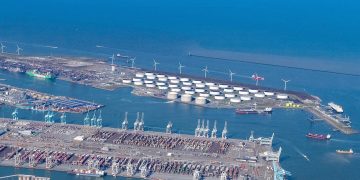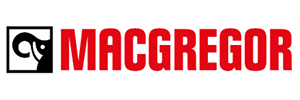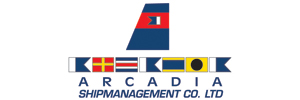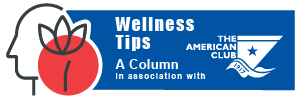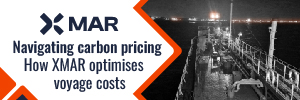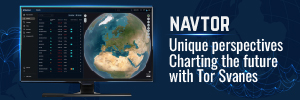In an exclusive interview to SAFETY4SEA, the newly elected President of WISTA Norway, Capt. Jaquelyn Burton, EMBA, AFNI, emphasizes that Diversity, Equity, and Inclusion (DEI) is not solely a gender issue—it’s about transforming industry structures, expectations, and mindsets to foster real progress.
Capt. Jaquelyn Burton underscores the importance of embracing cultural shifts that involve everyone. She notes that men must actively participate in the conversation as advocates, not bystanders. “We can’t normalize inclusion for women without also normalizing emotional expression and caregiving roles for men. That’s what a balanced future looks like,” she says, calling for a more human-centered approach to career development within the maritime industry.
SAFETY4SEA: What are the biggest challenges for the maritime industry from the DEI perspective?
Capt. Jaquelyn Burton: WISTA Norway has worked for 37 years to promote women’s careers in the maritime sector. In that time, we’ve seen progress—but not at the pace or depth we need. Globally, women still account for only 1.2% of the seafaring workforce, according to the 2021 BIMCO/ICS Seafarer Workforce Report. Even onshore, women make up just around 29% of the maritime workforce globally, with far fewer in technical or leadership positions (IMO-WISTA Survey 2021). In Norway, we’re doing slightly better: 11% of seafarers are women, and about 21% of the overall maritime workforce is female, rising to 33% in shore-based roles within shipping companies. Still, we’re not where we need to be. Representation in leadership is particularly limited. While the IMO-WISTA report found that 28% of maritime company board members are women globally, leadership roles with real decision-making power are still heavily skewed. That’s why WISTA Norway opened membership to men in 2017—because change will never be sustainable if it’s on women doing all the lifting. The first male member was Per Martin Tanggaard, who now serves on our board. In 2021, we launched the 40 by 30 pledge, encouraging companies to aim for 40% women in leadership by 2030. Movement towards Diversity, Equity and Inclusion isn’t a gender conversation per se. It’s about changing the structures, expectations, and environments that hold progress back for all underrepresented talents that could be improving the industry but are going elsewhere.
S4S: What are your suggestions to move forward?
Capt. J. B.: We don’t need more isolated programs that “empower women” without touching the environment they work in. We need culture shifts that involve everyone. That means:
- Men stepping in as advocates, not bystanders.
- Boards and Executives being intentional about appointing women not just in HR or admin, but technical and commercial roles.
- Organizations recognizing that inclusion also means removing stigma around caregiving for all genders.
We can’t normalize inclusion for women without also normalizing emotional range and caregiving roles for men.
That’s what a balanced future looks like. We have to stop treating inclusion as a charity project and start treating it as a strategy for industry resilience.
S4S: What are your key priorities on WISTA Norway’s agenda for the next five years?
Capt. J. B.: We have two main pillars: (1) increasing value for our members, and (2) helping shape a truly inclusive maritime industry. We’ll keep running national networking events and our Maritime Meet-Up mentorship program, with a focus on:
- Growing the “40 by 30” champion network,
- Providing spaces where female professionals gain visibility,
- Helping male members develop better understanding of how to recruit, retain, and support women in leadership.
We also want to normalize career shifts across life stages—between sea and shore, or from technical to people leadership. That includes:
- Sharing strategies for balancing caregiving and career growth,
- Advocating for policies that support caregiving for both women and men,
- Highlighting examples of resilience in navigating career pivots.
We’re also placing new focus on women’s health across the lifespan. Inclusion isn’t just about getting hired or promoted—it’s about being supported and having your contributions welcome at every stage of your professional and personal journey. That means awareness around menopause, fertility, and other issues that historically haven’t been talked about in maritime workspaces need to be opened as conversations and understanding about how we can contribute best when needs change across life cycles.
S4S: Tell us a few words about the ’40 by 30′ pledge. What motivated WISTA Norway to launch this initiative and how it aligns with the broader goals of gender equality and diversity in the maritime sector?
Capt. J. B.: The “40 by 30” pledge is now in its fourth year. We have 38 companies signed on, all committing to strive toward 40% women in leadership by 2030. This isn’t a quota, and it isn’t about replacing men. It’s about striving to increase the size of the talent pie in the sector to ensure we are future ready and able to view the challenges from various perspectives with resilience. Given Norway’s strong global maritime reputation, there’s a strategic opportunity here. If we get this right, we not only build more resilient leadership, we strengthen our competitive position in uncertain geopolitical times. Leadership teams that reflect the world around them will be better equipped for the future.
S4S: How has the role of women in the maritime industry evolved over the years?
Capt. J. B.: There’s been movement, but we’re still far from where we should be. Women make up just 1–2% of seafarers globally, per the 2021 Seafarer Workforce Report. The IMO-WISTA 2021 Survey found that only 29% of the global maritime workforce is female, with even fewer in operational or technical positions. And, although 28% of board members in surveyed companies were women, only 25% had female CEOs.
S4S: Are you satisfied with the progress made towards diversity so far?
Capt. J. B.: I’m proud of the progress, but no—we’re not there yet. The talent war is real. We’re not attracting the volume or variety of talent we need for maritime 5.0, for the energy transition, or for digital transformation. And if women don’t see visible, diverse career paths in the industry—they’ll go elsewhere. Diversity and safety go hand in hand. When we design for everyone, we usually create systems that are better for everyone. The public still often hears about shipping only when something goes wrong: oil spills, criminal cases, or safety incidents. We need to flip that narrative and show the world that this industry is a place for people who want to make a difference.
S4S: What are 3 key things you think are important to succeed as a woman in the maritime industry?
Capt. J. B.:
- Relationships: We need champions—people who mention our names in rooms we’re not in, who back us up when things get tough, and who open doors that might otherwise stay closed.
- A mindset open to opportunity: Say yes to the roles you’re not 100% ready for. If it’s adding value to the industry, you’ll grow into it.
- Clarity of purpose: Know what you want to change about the industry, and build relationships around shared goals—not just individual accomplishments.
S4S: What initiatives related to diversity and inclusion would you like to see in the workplace both onboard and ashore?
Capt. J. B.: We need a human-centered appraisal of the career paths in our industry. Who’s included? Who’s left out? And why? We have to look at how age, gender, nationality, and life phase all shape people’s access to opportunity. Every maritime professional has their own experience of the industry—and our systems need to acknowledge that.
S4S: How does the ’40 by 30′ pledge address diversity intersectionality, considering factors like race, ethnicity, and other forms of diversity beyond gender?
Capt. J. B.: Right now, ’40 by 30′ addresses the gender dimension only—but that’s a necessary starting point. If women make up half the global talent pool, and the industry is only drawing from 20% of them, we’re effectively ignoring a full 30% of potential talent. If we’re leaving that much capability untapped just on gender, it’s clear we’re missing even more when it comes to race, ethnicity, ability, and other dimensions of diversity that are equally critical to innovation and resilience in the industry.
S4S: What is your wish list for the industry stakeholders to implement changes and improvements with regards to DEI?
Capt. J. B.: I want us to include men more holistically. Women’s roles have expanded a lot over the last 50 years. In some ways, men’s roles haven’t. That gap creates friction—and sometimes backlash. If diversity, equity, and inclusion is seen as a zero-sum game where men lose when women advance, we’ve already lost the plot. The truth is, the more talent we include, the more value we create as a society. Diversity, equity, and inclusion should be framed around collective gain. It is not a competition of men vs. women but how we can ensure that the industry is resilient and grows with the best possible talent long-term.
S4S: What needs to change to raise the industry’s profile and attract future talents?
Capt. J. B.: We need more positive storytelling. Most people outside the industry only hear about shipping when there’s a scandal or disaster—that’s not the whole picture. Capt. Kate has done a lot to shift the narrative, but we need a thousand more like her, and we need male champions doing the same. We also need to show—clearly—that there’s a viable path from sea to shore. If people think a maritime career means staying at sea forever, we’ll lose many before they even begin. Another major issue is the lack of safe, supportive, and instructive internships for cadets globally. If we want to close the gap in qualified seafarers, we need to treat every experienced officer over 50 as a mentor—and for every one of them, we should be training up the next generation. There are many cadets who have finished maritime studies but have been unable to secure sea time as cadet that have left the industry, for others where they could find employment. Without strong, structured pipelines, the talent shortage we’re already seeing will only become more critical.
S4S: Do you have any new developments or projects on the pipeline that you would like to share with the industry?
Capt. J. B.: Yes! We’ve got a great lineup for Nor-Shipping, which we’ll be sharing soon. We’re bringing forward more dialogue around inclusive leadership, future competencies, and opportunities for cross-sector collaboration. I’m really excited to see how these conversations help shape the next phase of the industry.
S4S: If you could change one thing across the industry from your perspective, what would it be and why?
Capt. J. B.: I’d break down the silo between women’s and men’s networks. While it’s fantastic that women’s groups are gaining strength, too often we’re operating in parallel tracks. That can lead to exclusion and missed opportunities for collaboration. If we want to build better leadership, better innovation, and better retention, we need spaces where everyone’s contributing to the conversation together in an inclusive conversation space – another reason I am so excited for our Nor-Shipping line-up this summer!
S4S: Looking ahead to 2050, what key message about sustainable shipping would you include in a time capsule for industry stakeholders to reflect on?
Capt. J. B.: That shipping is a sociotechnical system. It’s never just the technology, and it’s never just the people—it’s the relationship between the two. If we want a safe and sustainable maritime future, we have to design for human-system resilience: where seafarers, shore teams, cargo owners, brokers, and other stakeholders are all part of an ecosystem that supports one another to grow and operate at their best. There is room for a win-win maritime future.
S4S: What is your key message to maritime stakeholders to support and drive industry’s goals for diversity?
Capt. J. B.: People have different needs, and different talents. If we want to get the best out of them, we have to stop designing systems based on sameness. Inclusion isn’t a buzzword—it’s the operational strategy for unlocking full performance. Think about how people experience their roles, not just what’s written in the job description. That’s where the real change begins
The views presented are only those of the authors and do not necessarily reflect those of SAFETY4SEA and are for information sharing and discussion purposes only.




















